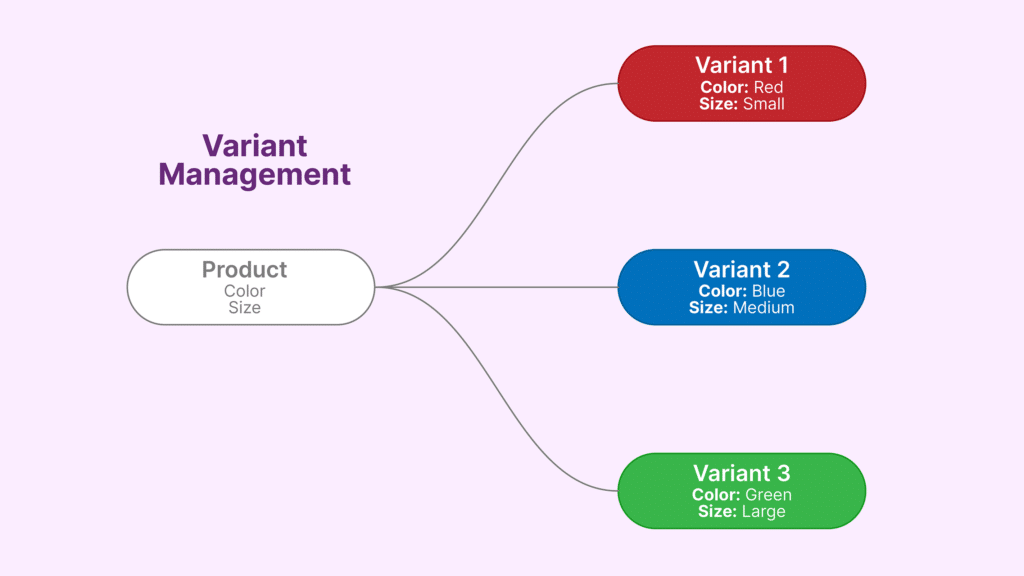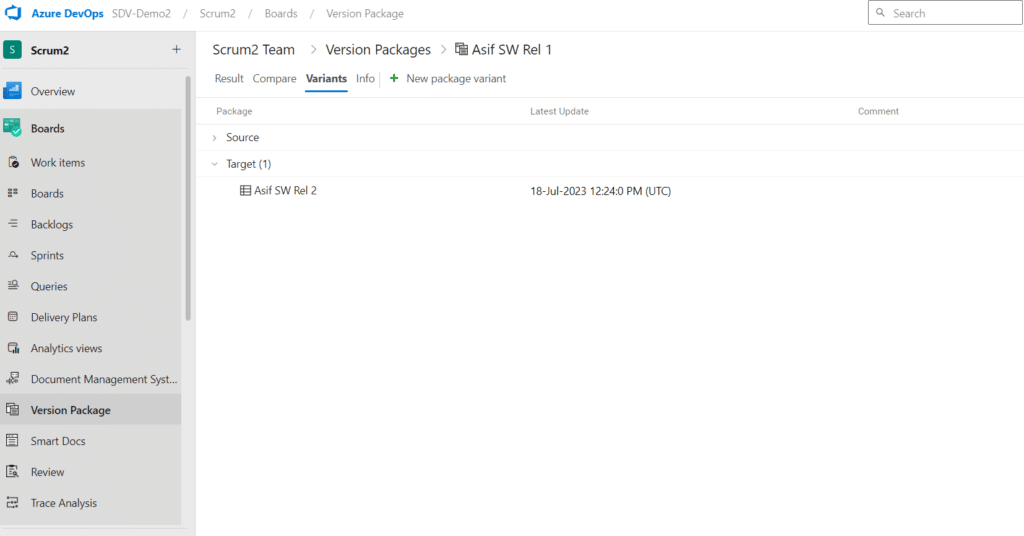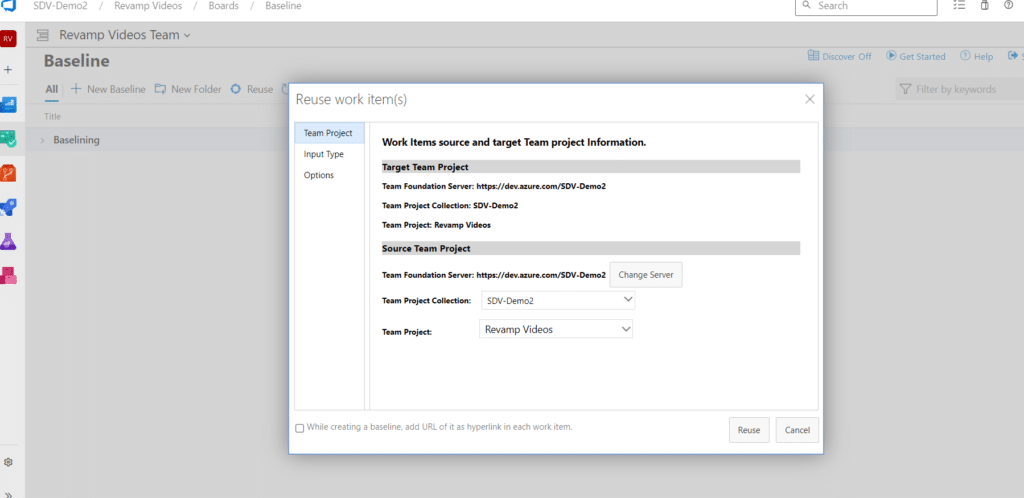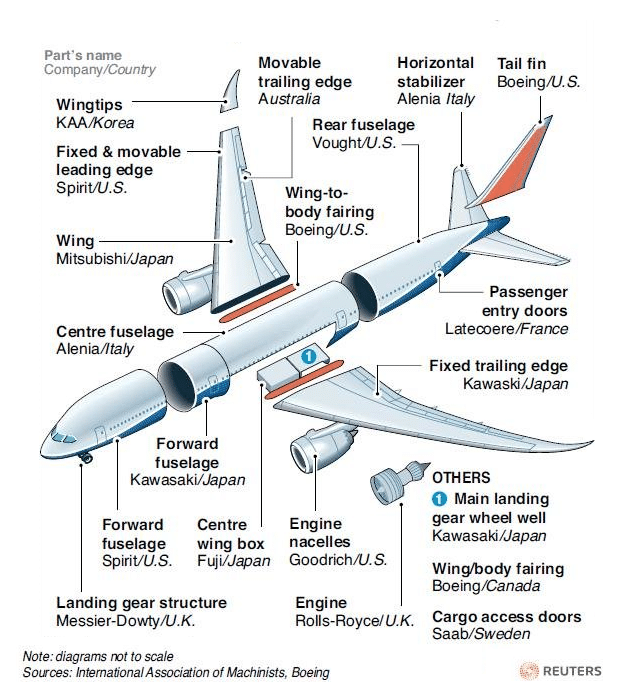
Unlocking Efficiency and Flexibility: The Power of Variant Management
- Arunabh Satpathy
- August 23, 2023
- 6 minutes
Variant management is the process of maintaining multiple versions of a product to meet diverse customer requirements. This is important because it helps businesses manage product complexity and variability while meeting diverse customer demands and market requirements.
Companies using variant management software and variant management techniques can offer customers tailored solutions faster and at a lower cost by sharing components instead of building new products from scratch.
This blog covers the benefits of variant management, how variant management software works, real-life examples, and the future of variant management.
Related Articles
1. Product vs Variant
Before we begin, it’s worth noting the difference between a product and a variant:
- A product is the main item or entity offered by a company.
- A variant is a specific version or configuration of said product with certain features or options.

Variants usually share most of their components of the product with additional features, options, or parts added or removed. Hardware variants exist to capture regional customer needs or to offer high-end and low-end options. For instance, the LE variant of a 2023 Toyota Corolla in the United States comes with features like a moonroof, touch-screen display, and remote keyless entry unavailable in the base L model.
2. Benefits of Variant Management
Variant management offers numerous advantages to companies, including increased speed and efficiency, leading to cost savings and revenue growth.
- Streamlining product development: Variant management software helps streamline the product development process by providing a centralized platform for managing product variants and configurations. A variant management solution incorporated into an ALM solution like Azure DevOps is even better because it turns a system like ADO into a single source of truth.
- Enhancing product customization capabilities: In an age where 66% of consumers want companies to cater to their unique needs and expectations, variant management can help companies provide a platform for managing product variants and configurations for customers.
- Managing complexity: When you start building multiple products with many different configurations, the number of permutations becomes surprisingly large. For instance, a 2016 Ford F-150 has 3 cab types, 3 mirror types, 2 interior packages, 2WD or 4WD and many other options. By sheer force of combinatorial mathematics, this product has up to 4,147,200 build permutations!
With such a ballooning complexity, a variant management software helps in tracking and organizing these complex product structures.

- Time-to-market: Companies with a traditional hardware-product perspective can fall into complexity traps that can increase errors and time-to-market. Effective variant management tools enable faster decision-making, more accurate product configurations, and better collaboration. This ultimately speeds up time-to-market.
These tools become especially effective if combined with other requirements management tools like embedded documentation, reporting, and – increasingly – AI requirements authoring. - Improving design reuse: Efficient teams can use the same requirements repeatedly across a project, multiple projects, hardware lines, or entire companies. At the simplest level, a business analyst can copy/paste requirements from a previous project. More modern teams can use tools to reuse requirements across projects, collections, and servers, reducing costs and improving product quality.

- Regulatory Compliance: With the increasing hybridization of hardware with software, regulatory compliance is becoming a more important aspect of product development. Variant management software helps ensure that all products and their variants meet quality and legal standards.
By using a combination of workflows, documents, and requirements your team can keep your company up-to-date and legally secure.
3. How Variant Management Software Works
Modern variant management software gives you features to leverage the above benefits. Variant management tools are usually embedded within ALM tools with requirements management features. Some common features of variant management software may include:
- Documentation: With the right tools, you can bridge requirements creation and requirements management by creating documents within your ALM tool. These documents can be linked to requirements, edited, shared, and changed for convenience and efficiency.
- Reusability: The right tools allow you to reuse requirements by reference by building links with them. You can then access the associated work items and all downstream content, links, and attachments with your project.
They may also allow you to reuse requirements by copy. By extending Azure DevOps for requirements reuse, you can (word missing) into your Azure DevOps environment through three different approaches.
- Traceability: By tracing the changes made to the requirements and how they impact the overall project, you can reduce errors and ensure that your final product meets stakeholder needs.
- Collaboration: When working on different versions of requirements, teams can comment and give feedback, leading to conflict resolution and increased product quality.
- Reviews and Approval: You can track the approval process for each version of the requirements with e-signatures, which helps to ensure approved changes are being executed.
4. Case Study: How the Boeing 787 Dreamliner Suffered

The Boeing 787 Dreamliner, a technologically advanced and long-range passenger aircraft had promised multiple variants to fit different needs. Some of the variants and their distinguishing features are listed below:
| Variant | Seating Capacity | Industry Range (Nautical Miles) |
|---|---|---|
| 787-8 | 242 to 290 | 7,530 to 7,850 |
| 787-9 | 296 to 296 | 7,530 to 7,530 |
| 787-10 | 330 to 330 | 6,345 to 6,430 |
With so many technical differences, Boeing faced many variant management challenges. This was exacerbated by excessive reliance on outsourcing, which led to a complex supply chain and low agility when making design changes. For instance, some titanium parts were improperly manufactured which led to continuing problems even after the launch of the aircraft. Software integration across variants also posed difficulties during flight testing and operation.
As a result, the Dreamliner led to delayed service, financial losses, and reputational damage to Boeing. The total development cost of the project was about US $40 billion, “well more than twice the original estimate.”
5. AI Variant Management: The Future
Perhaps the most noteworthy trend with variant management and most other technologies is artificial intelligence. By combining variant management features with AI tools that can help with requirements documentation, analytics, and supply chain vigilance, teams can further polish their products and improve their time-to-market.
As selling hardware without software has become unthinkable, the future will be characterized by increased automation, efficiency, and product customization.
6. Conclusion
Variant management is essential in product development. With increasing complexity, variant management at scale is increasingly synonymous with software variant management. Your team can manage multiple versions of a product and enable tailored solutions.
Integrated into ALM solutions like Azure DevOps, variant management software is even more powerful. Soon, you can combine variant management with AI tools to improve products and increase efficiency, positioning your business for success.


